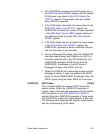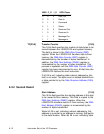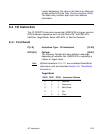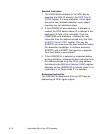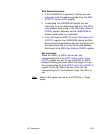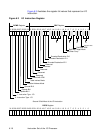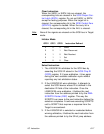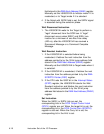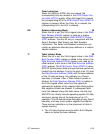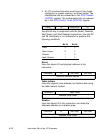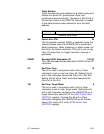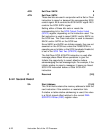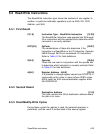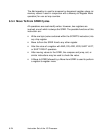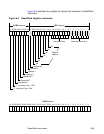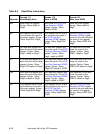
I/O Instruction 6-19
Clear Instruction
When the SACK/or SATN/ bits are cleared, the
corresponding bits are cleared in the SCSI Output Con-
trol Latch (SOCL) register. When the target bit is cleared,
the corresponding bit in the SCSI Control Zero (SCNTL0)
register is cleared. When the Carry bit is cleared, the
corresponding bit in the ALU is cleared.
RA Relative Addressing Mode 26
When this bit is set, the 24-bit signed value in the DMA
Next Address (DNAD) register is used as a relative
displacement from the current DMA SCRIPTS Pointer
(DSP) address. Use this bit only in conjunction with the
Select, Reselect, Wait Select, and Wait Reselect
instructions. The Select and Reselect instructions can
contain an absolute alternate jump address or a relative
transfer address.
TI Table Indirect Mode 25
When this bit is set, the 24-bit signed value in the DMA
Byte Counter (DBC) register is added to the value in the
Data Structure Address (DSA) register, and used as an
offset relative to the value in the Data Structure Address
(DSA) register. The SCSI Control Three (SCNTL3) value,
SCSI ID, synchronous offset and synchronous period are
loaded from this address. Prior to the start of an I/O, load
the Data Structure Address (DSA) with the base address
of the I/O data structure. Any address on a Dword
boundary is allowed. After a Table Indirect opcode is
fetched, the Data Structure Address (DSA) is added to
the 24-bit signed offset value from the opcode to
generate the address of the required data. Both positive
and negative offsets are allowed. A subsequent fetch
from that address brings the data values into the chip.
SCRIPTS can directly execute operating system I/O data
structures, saving time at the beginning of an I/O
operation. The I/O data structure can begin on any Dword
boundary and may cross system segment boundaries.
There are two restrictions on the placement of data in
system memory:
• The I/O data structure must lie within the 8 Mbytes
above or below the base address.



